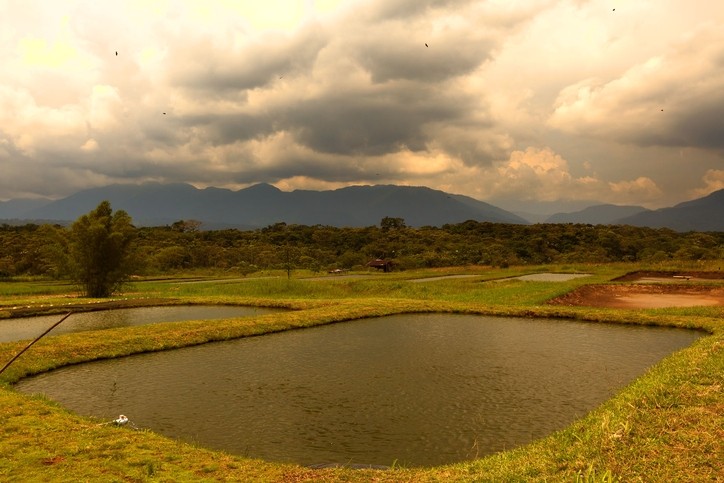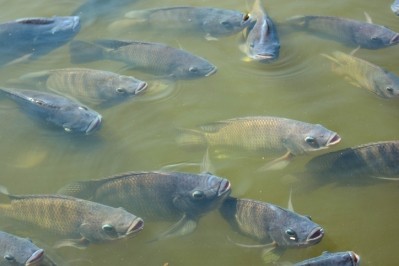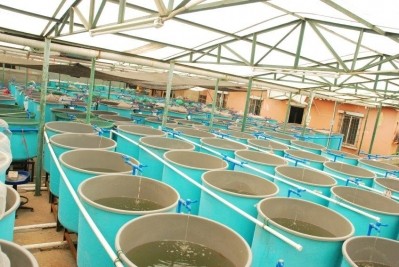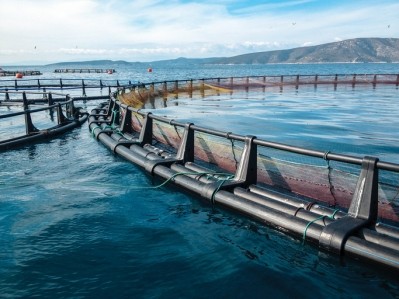Special Edition: Alternative Feed Proteins
Single extrusion systems, plasma contribute to efficient fishmeal-free Pacu feed: study

A team of researchers in Argentina from the Institute of Food Technology and the National Institute of Limnology examined the use of a single screw extrusion system to produce fish feed. They trialed the feeds with juvenile Piaractus mesopotamicus (pacu).
The team published their work in the journal of Animal Feed Science and Technology.
"An extrusion process using a single screw extruder in optimal conditions could be used to obtain fish feed based [on] vegetable meals and with very good physical properties," they found.
The feed generated was able to sustain growth performance for juvenile P. mesopotamicus.
“The optimal conditions were 181.5 °C and 15.8 g/100 g of moisture content,” the researchers said. “Significant differences in growth performance and condition factor between dietary treatments were not observed."
Background
Pacu is a commonly farmed fish in several parts of Argentina and Brazil. It is often raised in intensive systems in ponds.
Pacu fingerlings need a diet with at least 27% protein, and that feed ingredient is likely to be the most expensive part of the diet, said the authors. Past work has demonstrated that some of the dietary protein can be met with vegetable meals to reduce reliance on fishmeal.
However, use of plant protein meals may make feeds harder, produce a rougher surface or increase radial expansion of feed pellets, they said. Vegetable meal-based feeds also may have insufficient amounts of indispensable amino acids, or palatability issues and anti-nutritional factors.
One potential alternative is to mix multiple alternative ingredients like plasma protein with vegetable meals to improve the nutritional aspects and physical characteristics of the diet, noted the researchers.
Fish feed can be pelleted or produced through extrusion cooking, they said. While extrusion technology is used to generate feeds that are nutritious and have the needed physical qualities, the processing conditions may alter physiochemical properties, said the team.
Thus they said: "The aims of this work were: (i) to develop a formulation with corn meal, soybean meal and bovine plasma protein concentrate, (ii) to optimize extrusion conditions in order to have a product with maximum expansion and floatability, but minimum bulk density and water solubility, using a single screw extruder, (iii) to assess the nutritional effects of this feed using a juvenile P. mesopotamicus model."
Production and feeding trial
Cornmeal (CM), soybean meal (SM) and bovine plasma protein concentrate (BPPC) were analyzed and mixed, the researchers said. A Brabender 10 DN single-screw extruder, at a 3:1 compression ratio screw, a 3/20 mm (diameter/length) die and a screw speed of 175 rpm were used to generate feeds at three temperatures – 160 °C, 180 °C and 200 °C.
Extruded feeds were then analyzed for expansion (E), bulk density (BD), water absorption index (WAI), water solubility index (WSI) and floatability (F), they said. Feeds also were checked for nutritional elements.
The optimal extruded diet was calculated to maximize E and F while minimizing BD and WSI, they said.
About 210 juvenile pacu were given either the experimental extruded feed (EF) or a commercially available control feed (CF) for a period of 17 weeks, they said.
Fish were weighed every 3 weeks and growth and morphometric characteristics were determined, the researchers said.
Results
Differences were found among the feeds extruded at different temperatures, said the researchers.
The highest values related to feed generated at 160 °C, they said. The lowest BD value was found at 180 °C.
“The global desirability function value was 0.8805, and the obtained optimal conditions were 181.5 °C and 15.8 g/100 g of moisture content,” they said. “The specific mechanical energy consumption (SMEC) in this condition was 419.2 ± 31.0 J/g.”
The chemical analysis of the feed, when compared to the control used in the fish trial, found that the experimental feed had higher amounts of crude protein and gelatinized starch, the researchers said. Crude lipid and total starch content were similar in both feeds.
Ash content was larger in the CF along with calcium, phosphorous and iron, they said. Zinc amounts were similar in both feeds as was leucine.
Lysine, histidine, threonine and cysteine were higher in the EF diet, they said. CF had more saturated fatty acids, and the EF diet had more oleic and linoleic acids.
“However, only for CF, eicosapentaenoic acid (EPA), docosapentaenoic (DPA), and docosahexaenoic acid (DHA) were detected,” they said. “These results indicate control feed has fishmeal (FM).”
In the feeding trial, fish ate both diets and no mortality was displayed, the researchers said. Final body weights and weight gain were slightly higher for fish getting the experimental diets.
“No significant difference in growth performance and condition factor was detected between dietary treatments after 120 days of feeding trial,” they said.
Source: Animal Feed Science and Technology
DOI: 10.1016/j.anifeedsci.2017.09.004
Title: Optimization of single screw extrusion process for producing fish feeds based on vegetable meals and evaluation of nutritional effects using a juvenile Piaractus mesopotamicus model
Authors: R Cian, C Bacchetta, J Cazenave, S Drago













